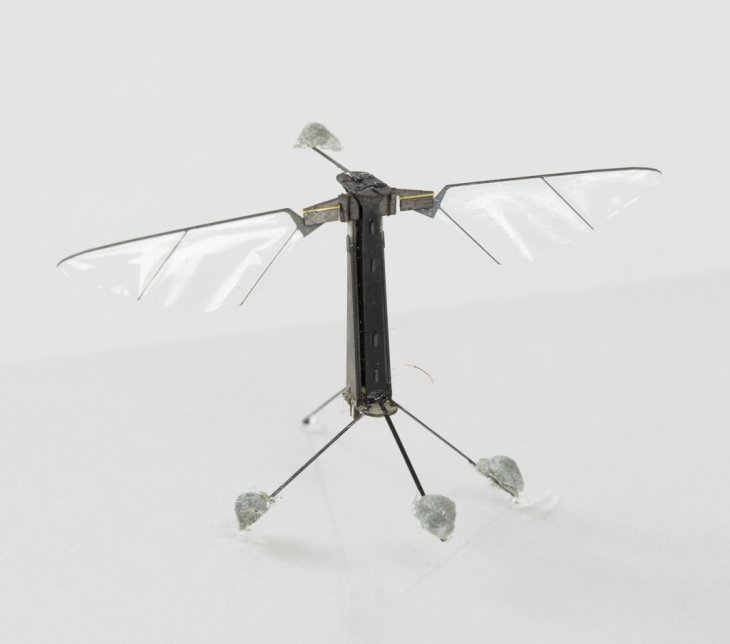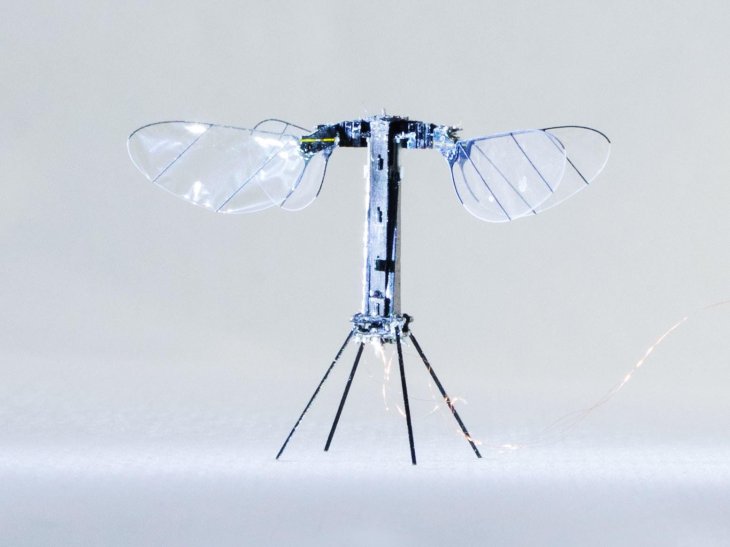Minuscule RoboBee X-Wing Can Fly Using Solar Energy
Harin - Jun 27, 2019

Researchers at the Harvard Microrobotics Lab have come up with the latest version of their astonishing RoboBee: the RoboBee X-Wing.
- Cafe In Tokyo With Robot Waiters Controlled By Disabled Staff
- Best Robot Vacuums In India To Clean Carpets, Wood Floor And Pet Hair
- AI Is Being Trained To Identify Faces In The Dark Using Thermal Images
Harvard Microrobotics Lab’s researchers have developed the latest version of the RoboBee called the RoboBee X-Wing.
The RoboBee from Harvard researchers is a minuscule robot which gets the inspiration of a bee, of course. The robot has two wings and a weight of less than one-tenth of a gram. However, to have enough power for flying, it had to be tethered to a power source.

On the other hand, the RoboBee X-Wing is the whole new level as it is equipped with an extra pair of wings as well as solar cells for autonomous and more stable flight. The extra pair of wings helps boost the robot’s efficiency by 30% to make up for the added weight of the extra electronics and the solar cells.
However, it still has one disadvantage: the robot can only fly for only half a second using solar panels. The robot is too frail to lug a battery around since the battery is several heavier than the robot itself. Therefore, if the researchers want to put the robot in the wild, they will need to improve solar cell technology and slim down the batteries.

E. Farrell Helbling, a Harvard engineer, who participated in developing the robot and is the co-author of the study, said:

The announcement of RoboBee X-Wing comes after an engineering team of the University of Southern California in Los Angeles came up with Bee+, a four-winged flying robot earlier this year. The robot has a weight of 95 grams, which is heavier than the RoboBee X-Wing.
Featured Stories

Features - Jul 01, 2025
What Are The Fastest Passenger Vehicles Ever Created?

Features - Jun 25, 2025
Japan Hydrogen Breakthrough: Scientists Crack the Clean Energy Code with...

ICT News - Jun 25, 2025
AI Intimidation Tactics: CEOs Turn Flawed Technology Into Employee Fear Machine

Review - Jun 25, 2025
Windows 11 Problems: Is Microsoft's "Best" OS Actually Getting Worse?

Features - Jun 22, 2025
Telegram Founder Pavel Durov Plans to Split $14 Billion Fortune Among 106 Children

ICT News - Jun 22, 2025
Neuralink Telepathy Chip Enables Quadriplegic Rob Greiner to Control Games with...

Features - Jun 21, 2025
This Over $100 Bottle Has Nothing But Fresh Air Inside

Features - Jun 18, 2025
Best Mobile VPN Apps for Gaming 2025: Complete Guide

Features - Jun 18, 2025
A Math Formula Tells Us How Long Everything Will Live

Features - Jun 16, 2025
Comments
Sort by Newest | Popular